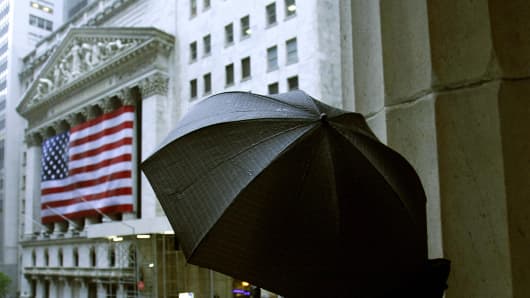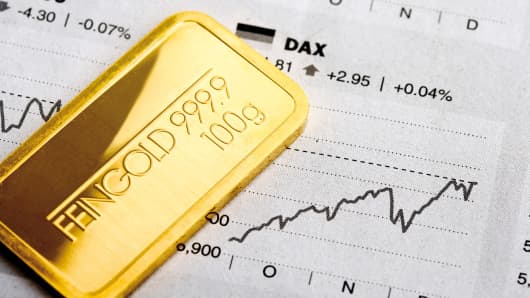The consensus outlook on Wall Street is gloomy for the immediate future, with glimmers of optimism for the longer term. This forecast might have been borrowed from Al Sleet, the "Hippy dippy weatherman" created by George Carlin.
Mr. Sleet could not actually predict the weather, but this did not deter him. Despite his manifest shortcomings, he learned how to issue gripping and reliable forecasts, which usually went like this. "Tonight's forecast - dark." Then he would pause, and continue, "later tonight, continued darkness." Like all good pundits, he also took the long view, adding a hopeful coda: "Turning to partly light in the morning."
That's about where the Wall Street consensus stands right now: the short-term outlook is dark, but it will start to clear when the immediate troubles are over.
(Read more: Time to Be Picky About Corporate Bonds)
With a weak economy, flagging corporate earnings and the prospect of a budget impasse in Washington, many investment houses are issuing warnings of impending market turmoil.
There are "clear and present downside risks to the market in the near term," Goldman Sachs said in a recent report. At Barclays, Barry Knapp, the United States equity strategist, said that such risks were "under-appreciated by investors." And Michael Hartnett, chief global equity strategist at Bank of America Merrill Lynch, warned that investors were "bipolar" at the moment - lurching between exuberant "risk-on" and depressive "risk-off" moods.
The Treasury market, which has largely held onto the gains of an extraordinarily long bull market in bonds, could benefit if stock investors panic. High demand from safety-seeking investors, combined with the Federal Reserve's aggressive interventions in the bond market, has kept Treasury yields very low, by historical standards, with 10-year notes hovering close to 1.6 percent.
Prices, which move in the opposite direction of yields, have been pinned at very high levels. But the fixed-income rally has been doom-ridden, and isn't likely to be sustained if the economic horizon brightens.
A major economic upturn is not part of mainstream, short-term forecasts. That helps explain why Goldman has been forecasting a year-end close of 1,250 for the Standard & Poor's 500-stock index, a substantial 13 percent decline from the index's Monday level of 1,418. And the investment bank expects Treasuries to maintain their rich prices in the near future.



